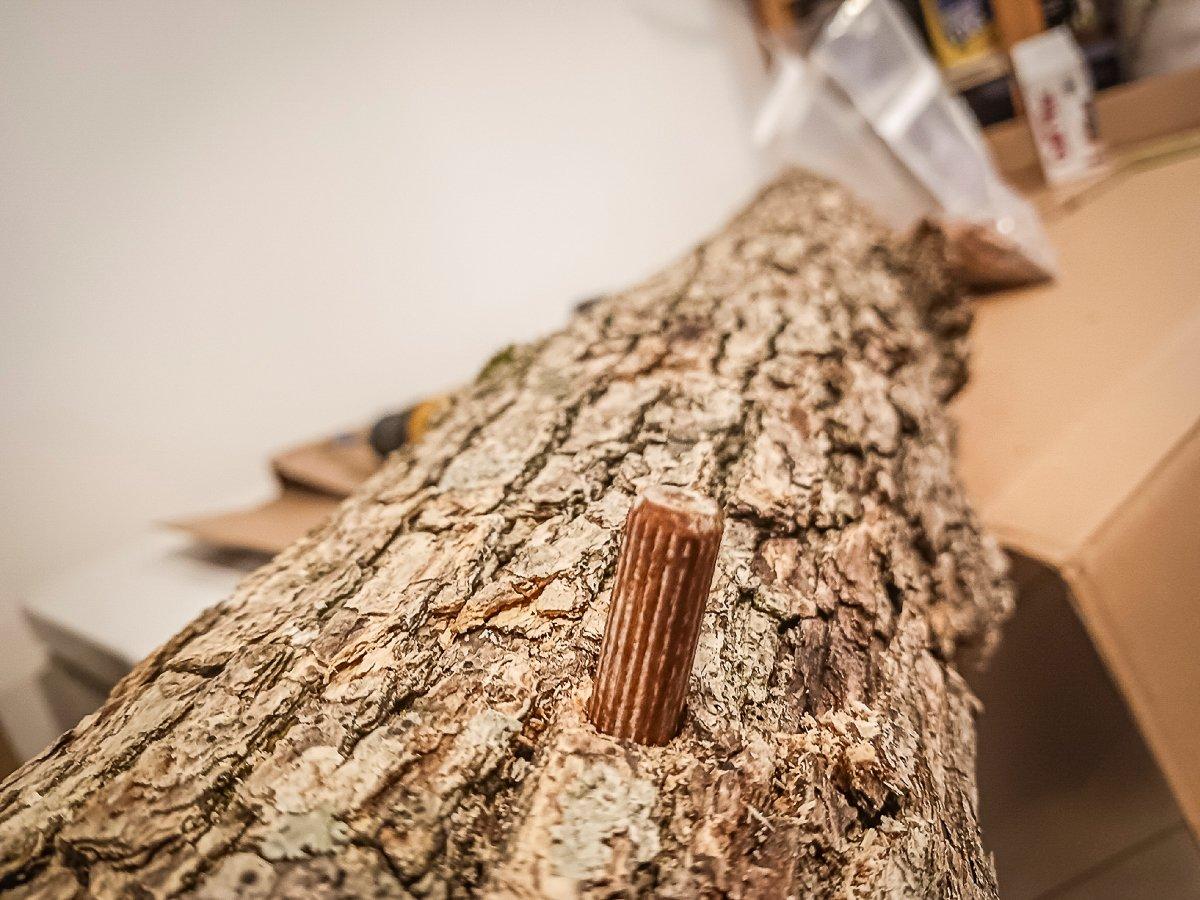Always have fresh, edible mushrooms on hand regardless of season when you grow your own at home
Foraging for wild mushrooms is a great way to spend time in the woods and provide delicious meals for you and your family, but most wild mushrooms have a relatively short growing season. When you can't find wild mushrooms in your area, you can still have plenty of fresh fungi anytime you need them.
Mushrooms are easy to grow at home — both inside or outdoors. From pre-inoculated kits that you only need to water and wait, to spores you spread on wet straw or wood chips, to inoculated plugs that you drill and insert into logs outdoors, there is a mushroom growing method for everyone.
While plants grow from seeds, mushrooms grow from spores. Once the spore lands on a suitable substrate, the mushroom sprouts. Common mediums for home growing include straw, wood chips, and logs.
What kind of mushrooms can you grow? The most common varieties are oyster, shiitake, button, lion's mane, portobello, and miatake. You can find mushroom spores, plugs, and pre-inoculated kits from a large number of online suppliers.
Indoor Kits
The simplest way to grow a mushroom and the way most enthusiasts get their start is in a pre-inoculated kit. The substrate for this style of kit is usually a small log or a small bale of straw.
Simply water the kits and stash them in an appropriate spot. Ideal conditions for growing mushrooms are 55-65 degrees, low light, and high humidity areas. Basements are perfect. A closet or empty cabinet will work in a pinch. Many kits recommend keeping the mushrooms about ten degrees warmer (70-75 degrees) for sprouting for a couple of days before moving the mushrooms to a cooler spot for growing.
Mushrooms need moist conditions, so many growers mist them with water daily or every other day and sometimes tent them with a plastic bag if air conditions are dry.
Once your mushrooms start growing, there isn't much upkeep other than trimming off the fully mature mushrooms once they are ready to cook.
Check online for various kits that come pre-inoculated with the species you desire. The upside to these kits are that they are nearly foolproof and great for young or first time mushroom growers. They grow fast, often producing a crop in under two weeks.
The downside is that many of these kits produce only one or two main crops, then a few sporadic mushrooms for a bit after the main harvest until they just stop producing altogether.
Straw Bags
Wet straw stuffed in hanging or stacked bags makes great substrate for home mushroom growers. The method takes a lot more space than small kits, but produces a ton of mushrooms and multiple crops per bag.
To grow mushrooms with this method, first chop the straw with a lawnmower, or use a string trimmer inside a large metal garbage can or barrel. Stuff the straw into cloth or canvas bags. Heat a large pot of water to 160 degrees and submerge the bags for 45-60 minutes to sterilize the straw and kill any remaining grain seed that might remain in the bag. Hang to drain.
Once the straw has been drained and has cooled, dump it into a large sterilized container. Mix in the mushroom spawn, usually sold in a sawdust substrate.
Once the straw has been inoculated, stuff it into sterilized plastic buckets with holes drilled into them, or stuff into plastic sleeves designed for mushroom growing. Poke holes every 4-6 inches for ventilation and to give the mushrooms a place to sprout.
Hang the bags in a warm area, ranging from 70-80 degrees, for two to three weeks so the mushrooms can begin to sprout. From there, move the bags to a cooler (55-65 degree range) area for the mushrooms to mature. While many mushrooms grow well in low light, oyster mushrooms require 10-12 hours of either natural or other light for optimal production.
Plugged Logs
Planting mushroom spores into logs as a way of cultivation has been around for over a thousand years. If you have some outdoor space and don't mind a bit of work and a year or longer wait, these logs can produce an annual crop of edible fungi for five or more years.
To do this, you will need a few tools. Required equipment is a saw to cut the logs, a drill with a 5/16 bit (the most common plug size) and a hammer for tapping the plugs into the drilled logs. You will also need sealing wax and a brush for applying the melted wax. You can purchase the wax from the same companies that supply the plugs.
Mushrooms grow best on hardwoods like alder, birch, oak, maple, cottonwood, and beech. Choose straight logs from 4-10 inches in diameter, ranging from 2-5 feet long. Later winter when the sap is running and sugars are highest in the trees is the best time to harvest your logs and plug them with mushroom spores.
Cut the logs and drill 1-inch holes about 6-8 inches apart all over the log. Tap the plugs in to fill the holes. Seal each plug with melted wax. Stack the logs in a loose formation. Water often to keep the logs moist.
Don't get discouraged if you don't see mushrooms right away. This is a long-term project. The first crop might not appear for a year or longer, but once they start, the logs will produce until they completely break down, often for years to come.
No matter what method you choose, growing mushrooms at home is easy, rewarding, and will result in many great meals to come.















